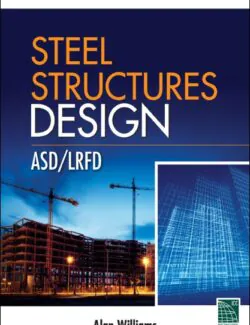Description
The Fifth Edition of Structural Dynamics: Theory and Computation is the complete and comprehensive text in the field. It presents modern methods of analysis and techniques adaptable to computer programming clearly and easily. The book is ideal as a text for advanced undergraduates or graduate students taking a first course in structural dynamics. It is arranged in such a way that it can be used for a one- or two-semester course, or span the undergraduate and graduate levels. In addition, this text will serve the practicing engineer as a primary reference.
The text differs from the standard approach of other presentations in which topics are ordered by their mathematical complexity. This text is organized by the type of structural modeling. The author simplifies the subject by presenting a single degree-of-freedom system in the first chapters, then moves to systems with many degrees-of-freedom in the following chapters. Finally, the text moves to applications of the first chapters and special topics in structural dynamics.
This text is essential for civil engineering students. Professional civil engineers will find it an ideal reference.







Leave us a comment
No Comments